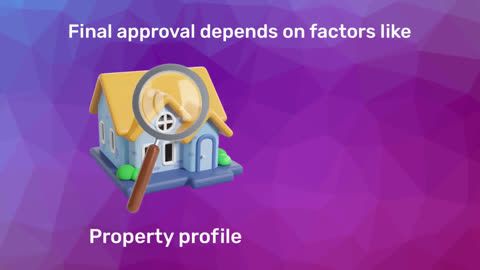Building tax in Kerala is a crucial aspect of property ownership and management in the state. Whether you're a homeowner, an investor, or a real estate developer, understanding the nuances of building tax in Kerala is essential for complying with local regulations and optimising your financial planning. This comprehensive guide will delve into the details of building tax in Kerala, covering its calculation, payment procedures, and the implications for various stakeholders.
What is building tax in Kerala?
Building tax in Kerala is a property tax levied by local municipal authorities on buildings based on their usage, type, and location. This property tax in Kerala contributes significantly to local revenue and is used for the maintenance and development of civic amenities.
Key features of building tax in Kerala
- Assessed by local bodies: The tax is assessed and collected by the local municipal corporation, municipality, or panchayat.
- Varies by usage: The tax rate varies depending on whether the building is residential, commercial, industrial, or institutional.
- Based on plinth area: The primary factor for calculating building tax in Kerala is the plinth area of the building, along with the location and type of construction.
Calculation of building tax in Kerala
The calculation of building tax in Kerala involves several factors, including the plinth area, the type of building, and the usage. Here’s a step-by-step breakdown:
- Plinth area measurement: Measure the plinth area of the building, which includes the total floor area covered by the building.
- Categorisation: Classify the building based on its usage (residential, commercial, etc.) and type (pucca, semi-pucca, kutcha).
- Rate determination: Refer to the rates specified by the local municipal authority for different categories of buildings.
- Calculation: Multiply the plinth area by the applicable rate to determine the annual building tax.
Who needs to pay building tax?
All property owners in Kerala are required to pay building tax. This includes:
- Residential property owners: Individuals owning houses or apartments.
- Commercial property owners: Owners of shops, offices, and other commercial establishments.
- Industrial property owners: Factories, warehouses, and other industrial properties.
- Institutional property owners: Schools, hospitals, and other institutional buildings.
In addition to building tax, property owners in Kerala must also be aware of Kerala land tax, which is a separate levy on the land itself, further emphasizing the need for comprehensive tax planning for property owners.
Payment procedure for building tax in Kerala
Paying property tax in Kerala involves a straightforward process, often facilitated by both offline and online methods. Here are the steps:
- Assessment notice: Property owners receive an assessment notice from the local municipal authority indicating the tax amount due.
- Payment options: Taxes can be paid through various channels, including:
- Online payment: Via the official website of the respective municipal authority.
- Offline payment: At designated counters in municipal offices.
- Receipt collection: Upon payment, ensure to collect and keep the receipt for future reference.
Building tax rates in different regions of Kerala
Building tax rates in Kerala vary by region and are determined by local municipal authorities. Factors influencing these rates include:
- Urban vs. rural areas: Urban areas typically have higher tax rates due to the greater demand for infrastructure and services.
- Zone classification: Municipalities may have different zones with varying tax rates based on property value and location.
- Type of building: Different rates apply to residential, commercial, industrial, and institutional buildings.
By understanding the specific rates applicable to their region, property owners can better anticipate their tax liabilities and plan their finances accordingly.
Benefits of paying building tax
- Legal compliance: Ensures compliance with local laws and avoids penalties.
- Property valuation: Proper payment records enhance the value and credibility of your property.
- Civic amenities: Contributes to the development and maintenance of local infrastructure and amenities.
Importance of building tax for infrastructure development
Building tax plays a critical role in infrastructure development in Kerala. The revenue collected from this tax is utilised for:
- Maintenance of civic amenities: Ensuring the upkeep of roads, public parks, and other essential services.
- Development projects: Funding new infrastructure projects that enhance the quality of life for residents.
- Public services: Supporting public services such as waste management, water supply, and sewage systems.
By paying building tax, property owners contribute to the overall development and maintenance of their communities, ensuring a better living environment for everyone.
Other topics you might find interesting |
|||
Explore Bajaj Housing Finance Home Loan
For those looking to finance their dream home in Kerala, Bajaj Housing Finance offers competitive home loan options. These loans are tailored to meet your financial needs, ensuring that you can comfortably manage your property purchase. By opting for a home loan with Bajaj Housing Finance, you can benefit from:
- Attractive interest rates: Lower EMIs to make homeownership more affordable.
- Long repayment tenure: Choose a repayment period that suits your financial situation.
- Easy application process: Hassle-free documentation and quick approval.
Steps to apply for a Bajaj Housing Finance Home Loan
Here’s step-by-step guide to apply for a home loan:
- Begin by clicking on the 'APPLY' button on this page.
- Fill in your full name, mobile number, and employment type.
- Choose the type of loan you wish to apply for from the available options.
- Generate and submit the OTP sent to your phone to verify your number.
- Once OTP verification is complete, enter additional information such as your monthly income, the desired loan amount, and whether you have identified the property.
- Provide your date of birth, PAN number, and other details as requested based on your occupation type.
- Click on the ‘SUBMIT’ button to finalize your application.
- That's it! Your application has been submitted. A representative will contact you shortly to guide you through the next steps.
Popular calculators for your financial calculations |
||
Apply for a home loan today!




